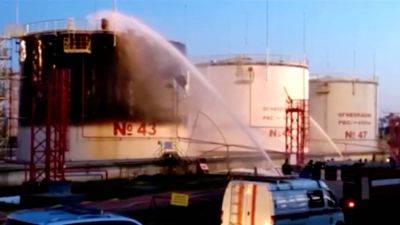US to convert oil rigs into floating missile defense sites
The US Navy has unveiled plans to convert surplus oil rigs into mobile missile defense and resupply facilities, a seemingly risky and costly scheme to address rising US vulnerability to rival missile threats in the Pacific.
This month, Naval News reported that Gibbs & Cox, a <a href=«https://finance.yahoo.com/quote/LDOS?.tsrc=» https:>Leidos
company, is working to convert oil rigs into heavily armed mobile missile defense and resupply bases as part of its Mobile Defense/Depot Platform (MODEP) Concept.
The scheme, designed for oil platforms in the Western Pacific where US forces face intensifying ballistic missile threats, not least from China’s DF-26 “carrier killer” projectiles, was presented at this month’s Sea Air Space 2024 expo held in Washington DC.
MODEP is configured as a large floating island base to be deployed at an ideal distance from shore and operate independently for over 12 months. The concept seeks to help fill ballistic missile defense (BMD) capability gaps and the US Navy’s demand for an at-sea reloading solution.
BMD and depot variants can travel 5-8 knots and cover around 200 nautical miles daily. MODEP’s total endurance is expected to be 150 days with a range of 4,000 nautical miles without refueling.
The converted platform is envisioned to enhance US air defense or strike missions. With a capacity five times that of an existing Arleigh Burke-class destroyer, the MODEP could hold up to 512 vertical launch system (VLS) cells or 100 large missile launchers.
The platform could conceivably lead to a substantial reduction in risks and costs associated with land-based defense systems.
The MODEP concept also aims to support the sustainment of the US Navy’s surface combatants and nuclear submarines through







